Technical details
| AERIAL SA101 Type 4249F |
|
13 feet 6 inches long and 3 feet high |
| Elevation adjustable between 0° and 12° |
| Azimuth Speed - 10 RPM |
| 35dB gain |
| TRANSMITTER Type 1454M |
| 9410 Mc/s |
| 50 K.W. peak power |
| Pulse length 2 microseconds at a PRF of 333 pps |
| RECEIVER |
| -100dBm Receiver Noise Level, Swept Gain Range - 60 NM |
| DISPLAY Type SD701 |
| 12" PPI |
| Ranges;25, 50, 100, 200 nm |
| OTHER EQUIPMENT |
| Iso-Echo system |
| Automatic Camera fitted to PPI - pre determined time interval |
"The radar had an Iso-echo system to allow assessment of rainfall rates out to 60 to 100 miles and assist in detection of hail".This unit was below the elevation unit and had two controls. On the left a 3 position multiplier switch labeled A-B-C and on the right a stepped attenuator switch with nine positions, each step was about 1.5db. This Iso-echo system and the Swept Gain (out to 100NM) was not originally supplied with the radars but added in 1963 (1) (2) (3)
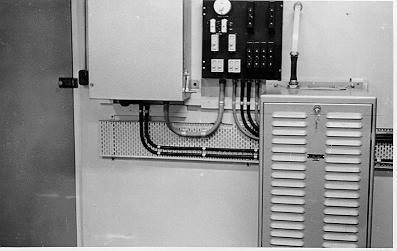 |
|
SNW51 Transmitter Type 1454M
|
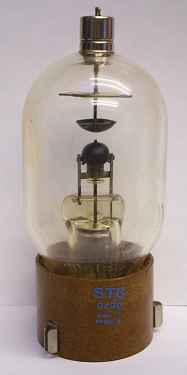 |
|
Trigertron without cover
|
The receiver had a 30MHz IF that was stagger tuned over 8 stages with both main and swept gain control.
The Transmitter used a trigertron in the modulator which after 2 to 3 months
continuous use had to be replaced due to the amount of scale accumulated inside
the envelope and of course it wasn't operating properly.(1)
This tube was normally covered with a protective 'sock' in case it exploded.
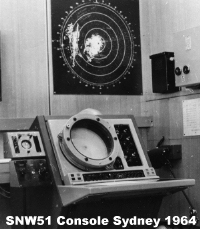 |
|
SNW51 Display Type SD701 at Sydney (1964)
|
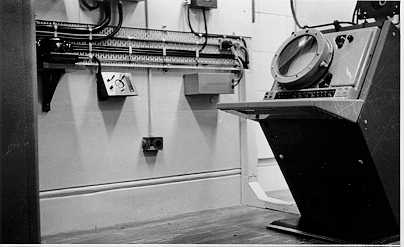 |
|
SNW51 Display Type SD701 at Byron Bay
|
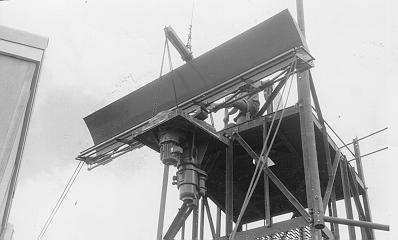 |
|
Antenna Type 4249F
being installed at Saddle mtn.
|
The analogue meter that indicated the elevation angle was mounted on the left of the PPI, this was wall mounted at Byron bay .
The iso-echo unit can be seen mounted under the Elevation meter in the photo of the Sydney RFC Display Unit.
The antenna was 13 feet 6 inches long and 3 feet high giving an azimuth beam width of 0.5 degree and an elevation beam width of 3.8 degrees. The feed was a slotted waveguide section providing a horizontally polarised beam. The antenna could be tilted up to 12° in elevation. The elevation actuator was a Bendix Aircraft Flap Motor which gave excellent control.
There was a spare antenna with turning gear kept out on the grass at the Observatory Hill Workshop in Sydney. Every two years it would be totally overhauled, including sandblasting and repainting. it was then trucked up to Byron Bay and swapped with the unit in service. Vidya recalls travellingg on board the truck with trvor Donald during his time working in N.S.W. (1975-1980)(4)
(1) Trevor Donald (private communication)
(2) Weather News(#84 & 194)
(3) Working Paper No 48 June
1962, Notes on Sferics, Radar and Atmospheric Turbulence by
Goodman, Bath & McRae
(4) Vidya Sharma (private
communication)